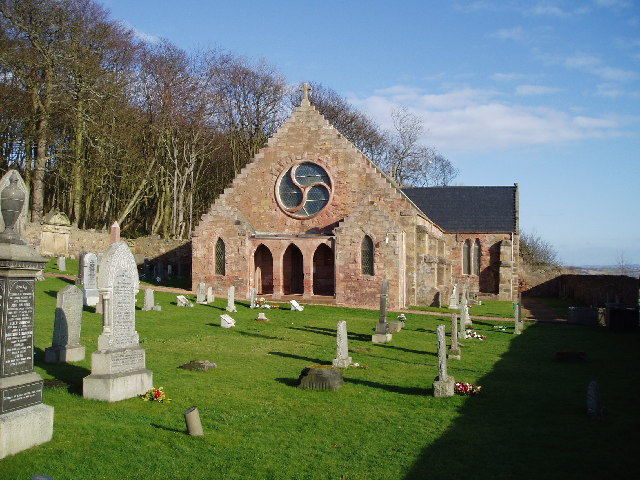Text from The Saint Andrew Daily Missal,
unless otherwise stated.
Saint Adrian.
Martyr.
Feast Day 8 September.
Simple.
Red Vestments.
Saint Adrian's Church, West Wemyss, Scotland.
The Church was built in 1890.
Date: 20 February 2006.
Source: From geograph.org.uk
Author: Kevin Rae
(Wikimedia Commons)
"At Nicomedia", says The Roman Martyrology, "Saint Adrian, Martyr, and twenty-three other Saints, who, after undergoing many torments, had their legs crushed, and thus ended their glorious fight, under the Emperors Diocletian and Maximian, about 303 A.D.
"The body of Saint Adrian was later Translated to Rome on the day when his Feast is Solemnised".
Mass: In virtúte.
English: Stained-Glass Window, depicting Saint Adrian (centre) in the Basilica of Saint-Nicolas, Saint-Nicolas-de-Port, Meurthe-et-Moselle, Lorraine, France. Below are the Armorial Crests of The House of Lorraine (left), The House of Anjou (centre) and the City Arms of Saint-Nicolas-de-Port.
Deutsch: Bleiglasfenster (Baie 17) in der Basilika Saint-Nicolas in Saint-Nicolas-de-Port im Département Meurthe-et-Moselle (Lothringen/Frankreich), mit Fragmenten aus der Renaissance; Darstellung: Ehepaar Fiacre Fériet (links) und Jennon Thierie (rechts), hl. Adrian von Nikomedien; unten Wappen des Hauses Lothringen (links), des Hauses Anjou (Mitte) und Stadtwappen von Saint-Nicolas-de-Port.
Photo: 26 April 2015.
Source: Own work.
Author: GFreihalter
(Wikimedia Commons)
The following Text is from Wikipedia - the free encyclopædia.
Saint Adrian (also known as Hadrian), or Adrian of Nicomedia, was a Herculian Guard of The Roman Emperor Galerius Maximian. After becoming a convert to Christianity, with his wife Natalia, Adrian was Martyred at Nicomedia.
Saint Adrian and Saint Natalia lived in Nicomedia, during the time of Emperor Maximian, in the Early-4th Century A.D. The twenty-eight-year-old Adrian was Head of The Prætorium.
It is said that, while presiding over the torture of a band of Christians, he asked them what reward they expected to receive from God. They replied:
"Eye hath not seen, nor ear heard, neither have entered into the heart of man, the things which God hath prepared for them that love him" (1 Corinthians 2:9).
He was so amazed at their courage that he publicly confessed his Faith, though he had not himself yet been Baptised. He was then immediately imprisoned. He was forbidden visitors, but accounts state that his wife Natalia came to visit him, dressed as a boy, to ask for his Prayers when he entered Heaven.
The executioners wanted to burn the bodies of the dead, but a storm arose and quenched the fire.
THE SAINT ANDREW DAILY MISSAL
Available (in U.K.) from
Available (in U.S.A.) from
Available (in Ireland) from










